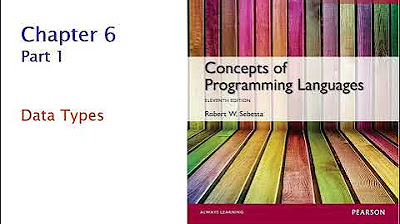ENUMS in C++ explained easy 📅
Summary
TLDRThis script introduces enums, or enumerations, as a user-defined data type consisting of named integer constants. It explains how enums can be used in place of strings within switch cases, enhancing code readability and functionality. The example of days of the week demonstrates their usage, where each day is an enum with an associated integer value. The script also highlights the error that occurs when non-declared values are used with enums, emphasizing their restricted nature to predefined values. It concludes with a call to action for viewers to share their own enum examples.
Takeaways
- 🔑 Enums (short for enumerations) are user-defined data types consisting of named integer constants.
- 🗓️ Enums are useful for defining a set of potential options, such as days of the week.
- 🛑 Traditionally, strings cannot be used in switch statements, but enums can be used instead.
- 🔄 Enums allow for the creation of a custom data type where each name is associated with an integer value.
- 📝 The declaration of an enum starts with 'enum' followed by a name, e.g., 'enum Day' for days of the week.
- 🔢 Each enum name can be optionally assigned an integer value; if not assigned, it defaults starting from 0.
- 🔄 Enums can be used in switch statements, allowing for cleaner and more readable code compared to using strings.
- 🚫 Enum variables can only take one value from the set of defined enum names.
- 🍦 An example of enums is defining sets of flavors, colors, or even planetary sizes in kilometers.
- 💻 The script is a tutorial on enums in C++, encouraging viewers to practice by posting their own enum examples.
Q & A
What are enums and what do they stand for?
-Enums, short for enumerations, are user-defined data types consisting of named integer constants. They are useful for defining a set of potential options or values.
Why are enums preferred over strings in switch statements?
-Enums are preferred over strings in switch statements because they allow the use of named constants, which are associated with integer values, making the code more readable and less error-prone compared to using strings.
How do you declare an enum in the script?
-You declare an enum by specifying the keyword 'enum' followed by a name for the set of enumerations, then listing the named constants with optional associated integer values.
What is the significance of associating values with enum names?
-Associating values with enum names allows the enum to be used in switch statements and other integer-based operations, providing a clear and meaningful representation of the data.
What happens if you don't assign an integer value to an enum name?
-If you don't assign an integer value to an enum name, it will implicitly be assigned a value starting from 0 and incrementing by 1 for each subsequent name in the enum.
Can you use enum values in switch cases?
-Yes, you can use enum values in switch cases because they are associated with integer values, which are compatible with switch statements.
Why is it an error to use strings directly in switch cases?
-Using strings directly in switch cases is an error because switch statements expect integer or enumeration values, not string literals.
What is the advantage of using enums over arbitrary integer values?
-Enums provide a more readable and maintainable way to use integer values by associating them with meaningful names, which can improve code clarity and reduce errors.
Can enum variables hold more than one value from the set?
-No, enum variables can only hold one value from the set at a time. They are designed to represent a single named constant from the enum.
What is an example of a practical use case for enums as mentioned in the script?
-An example of a practical use case for enums is representing days of the week or a set of predefined options, such as flavors or colors, where a set of named constants is more descriptive than arbitrary integers.
Outlines

このセクションは有料ユーザー限定です。 アクセスするには、アップグレードをお願いします。
今すぐアップグレードMindmap

このセクションは有料ユーザー限定です。 アクセスするには、アップグレードをお願いします。
今すぐアップグレードKeywords

このセクションは有料ユーザー限定です。 アクセスするには、アップグレードをお願いします。
今すぐアップグレードHighlights

このセクションは有料ユーザー限定です。 アクセスするには、アップグレードをお願いします。
今すぐアップグレードTranscripts

このセクションは有料ユーザー限定です。 アクセスするには、アップグレードをお願いします。
今すぐアップグレード5.0 / 5 (0 votes)






